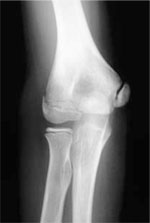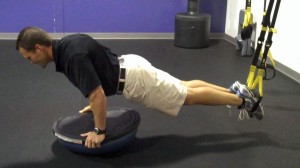Brian Schiff’s Blog
Injury Prevention, Sports Rehab & Performance Training Expert
I have been attending the 26th Annual Cincinnati Sports Medicine Advances on the Shoulder and Knee conference in Hilton Head, SC. This is my first time here and the course has not disappointed. I have always known that Dr. Frank Noyes is a very skilled surgeon and has a great group in Cincinnati as I am originally an Ohio guy too.
So, I thought I would just share a few little nuggets that I have taken away from the first three days of the course so far. I am not going into great depth, but suffice it to say these pearls shed some light on some controversial and difficult problems we see in sports medicine.
Shoulder Tidbits
- Fixing SLAP tears may not always fix shoulder pain as in many cases it may be in part due to posterior capsule tightness and anterior instability leading to internal impingement. Additionally, many of the docs here choose not to repair type 2 tears in those over 40 tears and provide a biceps tenotomy or tenodesis to instead to deliver more predictable pain relief as opposed to a labral repair.
- Intraoperative pain pumps in the shoulder are causing glenohumeral joint chondrolysis in the shoulder in many cases. According to the panel of docs, this has been seen in teenagers and patients in their twenties as well. They have often undergone other procedures from outside docs and then developed increasing pain afterward. Many have had to even undergo a total shoulder replacement after a few years post-op. The MDs here have suggested even post-operative Marcaine injections for pain relief in the shoulder should probably not be used. It was very sad to see an 18 y/o shoulder x-ray they put up that looked as if the patient was 80 years old.
- Double row rotator cuff tendon repairs seem to outperform single row repairs with respect to tendon healing (90% for DR and 76% for SR techniques in a comprehensive review of the literature)
- Stretching cross body horizontal adduction may be more important for throwers and overhead athletes than the sleeper stretch – best to have a therapist stabilize the scapula and then move the shoulder across the body keeping the shoulder in neutral rotation (it will tend to externally rotate)
- Arthroscopic stabilization is better than open surgery for posterior shoulder instability as the posterior cuff and deltoid are not violated, ROM recovery is more predictable, patient satisfaction is higher and there is a more predictable return to sport
Knee Tidbits
- Increased femoral anteversion and torsion is a developmental factor that does in fact control the knee to a great extent. The tibial tubercle-sulcus angle, thigh-foot angle and foot alignment is also key according to Dr. Lonnie Paulos. In cases of miserable patella mal-alignment, many will need de-rotation and re-alignment procedures to improve their symptoms.
- The consensus among the orthopods here was that using a bone-tendon-bone patella tendon autograft to reconstruct torn ACLs in the younger more active athletes (soccer players and football players) is preferable to a hamstring graft or allograft. Allografts did not seem to be the graft of choice by any of the docs for the younger patients. Some would use a hamstring autograft provided there was no MCL pathology. The PTG autograft was the gold standard for years (always my favorite graft choice for high level/demand athletes) so I was pleased to see the trend for this population moving away from the ST/gracilis HS grafts.
- Kevin Wilk, DPT (primary PT for Dr. James Andrews), was advocating restoring full and symmetrical ROM after ACL surgery. I tend to agree with this principle myself. However, Dr. Noyes was not in agreement and rather cautiously noted he would be okay with about 3 degrees of hyperextension on the repaired side no matter how much hyperextension was available on the other side. Kevin also noted that restoring full flexion was paramount to restoring running mechanics and speed in higher level athletes.
- The golden time to repair a MCL tear is in the first 7-10 days. Dr. Paulos also suggested it is absolutely necessary to fix the deep layer as well as the superficial layer. His talk emphasized how big of a mistake it is to not repair the deep layer. He also warns that the strength of the repair is less important than restoring proper length, tension and collagen.
- For PCL augmented repairs, a 2 bundle repair is repaired. Most of the docs like to use a quad tendon autograft from the contralateral thigh, but will take it from the same leg if patients insist. The consensus seemed to be that a repair should be done if there is 10 millimeters or more of drop off.
These are just some of the highlights I wanted to pass along. There was lots of other good stuff (much of it a nice review of anatomy, biomechanics and protocol guidelines for rehab) but I wanted to pass along some of these key items while they were fresh in my head. I will likely be sharing more in the future, particularly with respect to patello-femoral pain and SLAP tears as these are just so controversial in terms of surgical and rehab management.
The News and Observer (our local paper here in the Triangle) recently ran a great story on overuse injuries in young athletes. I firmly believe this is one of the fastest growing injuries I see in the clinic and in many cases it is preventable. One of the biggest issues now is this commonplace idea that gifted athletes should play the same sport year-round to get ahead.
I remember growing up as a kid and playing football, basketball and baseball in the fall, winter and spring. While AAU basketball and Legion ball existed, most kids were still playing multiple sports. Over my 15 years as a physical therapist I have witnessed several of these one sport stars see their playing time and bodies take a hit due to injury.
The American Orthopedic Society for Sports Medicine (AOSSM) and the American Academy of Orthopedic Surgeons (AAOS) state that overuse injuries account for nearly half of the 2 million injuries seen among high school athletes each year. While soccer and swimming seem to send many athletes into PT, any repetitive throwing or overhead activity bears considerable risk for an eventual shoulder or elbow problem as well. Some of the common injuries I typically see are:
- Patellofemoral pain
- Shin splints
- Rotator cuff injury
- Bursitis
- Shoulder instability
- Little League elbow

Little League Elbow (medial epicondylar apophysitis)
These injuries are just some of the most common ones I see. In the article, the reporter focused on baseball and throwing. With that in mind, consider research published in the American Journal of Sports Medicine this past February from renowned surgeon James Andrews that revealed players who pitch more than 100 innings in a calendar year are 3.5 times more likely to be injured.
He goes on to say that “these injuries are the result of a system that prepares genetically gifted athletes to play at the highest levels, but eliminates most players because their bodies cannot withstand such intense activity at such an early age.” Sadly, he told the reporter that in 1998 he performed the Tommy John procedure on 5 kids high school age or younger, while in 2008 he did the same procedure on 28 children in the same age range. This injury is usually caused by throwing too much too soon.
Consider the following data on suggested pitch counts per game (source James Andrews, MD & Glenn Fleisig, MD):
- 8-10 y/o = 52 plus/minus 15 pitches
- 11-12 y/o = 68 plus/minus 18
- 13-14 y/o = 76 plus/minus 16
- 15-16 y/o = 91 plus/minus 16
- 17-18 y/o = 106 plus/minus 16
Unfortunately, I can personally relate to this blog post and story. I was a promising young pitcher up until the point I threw my arm out in travel baseball at age 13. The pain got so bad in my arm I could barely throw a ball 10 feet. I remember the orthopedic surgeon telling me that I could not throw again the rest of the summer. The pain (and memory of it) was so bad I elected to focus on position play and not to pitch again until my senior year of high school. At that point, my arm was no longer the same as I had missed three years of practice and development. Now, I too had become one of those kids whose body was never the same.
So, as a rehab and strength & conditioning professional, I want to help educate and promote better awareness to athletes, parents, coaches, trainers, AD’s, ATC’s and anyone who is involved in the care and training of young athletes. Fortunately, people are taking positive steps to reduce overuse injuries. One great initiative is STOP – Sports Trauma Overuse Prevention and you can learn more by clicking here to visit their website.
In the end, we must continue to educate everyone that the old motto of “No Pain, No Gain” is NOT the way to handle overuse injuries as this mentality may ruin the careers of young athletes or lead to an otherwise preventable injury and/or premature musculo-skeletal damage. Pain truly is a warning signal the body gives us to detect mechanical problems and make changes in our training/activity level until we sort out the cause and solution. I hope you will join me in supporting this mission and working hard at making sports fun, safe and free of overuse injuries for young athletes of all ages in the years to come.
References – The News & Observer – May 15, 2011
I probably get more emails about shoulder problems than anything else. Most of the emails center on rotator cuff and SLAP tears, as well as whether or not to have surgery.
Let me be clear – I am not going to tell you TO or NOT TO have surgery in this post. That is for you and your MD to decide. However, I will give you my thoughts on key considerations with respect to this major decision.
Below are some major considerations to take into account if you are facing this dilemma.
Indications for having surgery:
- Unremitting pain (especially at night)
- Loss of daily function (dressing, bathing, self care activities)
- Marked loss of strength
- Bony impingement with failed rehab
- Moderate to massive tears with active jobs, healthy and < 50 y/0
- Isolated partial and full thickness tears with high probability of operative success after failed rehab
Now, some contraindications for surgery:
- Weakened tissue (including too much tissue retraction or shortening)
- Multiple tears in older population
- Failed previous rotator cuff repair
- High risk patients (includes those with cardiovascular and other medical issues)
- No rehab trial to date
- Partial or full thickness tears with good range of motion, negligible pain and sufficient strength to do most activities of daily living
These thoughts are mostly relative to rotator cuff pathology. SLAP tears are a much different animal in that they often do not do well conservatively with rehab, particularly in active patients. I approach SLAP tears in rehab much like I do a cuff problem, but the varying degrees of SLAP tears and associated involvement of biceps tendon pathology and/or rotator cuff damage make the treatment algorithm more challenging.
What I san say with confidence is that shoulder surgery is never quick and easy. The shoulder is such a complex and pain sensitive joint that whether or not you have arthroscopic or an open repair, the rehab and recovery process is often painful and laborious. This is not to deter you, but more so to make you aware that once you wake up from surgery your shoulder will not be back to normal, nor is there any guarantee your shoulder will be as good as new again. You understand that there is no problem surgery cannot make worse (quote from Dr. Jack Hughston).
Finding a skilled and competent shoulder surgeon will certainly lessen the complications and recovery window. So, when faced with the prospect of surgery, be certain to exhaust conservative measures first, seek multiple MD opinions, get an X-Ray/MRI, and weigh the current functional deficits with the desired functional level to determine the best course of action.
It is no secret that the average male gym goer loves to do plenty of bench press exercises. I was out at a piano bar last weekend celebrating the 10 year wedding anniversary of some close friends and witnessed the “bar body” syndrome firsthand.
For those not familiar with this lingo, the “bar body” belongs to the guy who overworks the chest and biceps, while typically neglecting the back leg muscles altogether. They routinely sport tight t-shirts and jeans even in the dead of summer in Ohio.
I spotted the bouncer right away. He was likely 25 years old and obviously proud of his caveman posture and large stature. What he does not know is that in 5-15 more years he will likely suffer significant shoulder impingement and AC joint arthritis, not to mention he will have little to no upper body flexibility.

Know anyone that fits this description? Look around in your local health club and you will surely find them. So, the takeaway messages are:
- Perform back to chest strengthening exercises in a ratio of 3:2 or even 2:1 to promote balance and better posture
- You do not need to bench press all the time (once per week is sufficient and may even be too much for some)
- You should do routine flexibility exercises for the chest as these muscles are tight in most of the population and they can contribute to increased internal rotation of the shoulders and rotator cuff problems
In light of this, I want to share a few effective exercises from my brand new Training & Sports Medicine Update Newsletter. To view these exercises, click HERE.
If you enjoyed this information, you can get even more info on exercise, recent research, sports performance training, injury prevention and rehab delivered to your inbox monthly by signing up for a subscription to my newsletter. You can grab the digital version for just $9.95/month. By subscribing, you are become eligible for immediate product discounts and promotional pricing on all new items.
Click here to sign up and get the entire first issue today!
In health,
Brian
In my blog I like to share new exercises and columns I write with you. Today, I am sharing the latest column I recently wrote for PFP magazine. If you like core killer exercises, then this one is for you. It also stresses shoulder stability. Note: this exercise requires a moderate to high level of upper body strength.

Start Position

Forward Rocking Position

Backward Rocking Position
If you enjoy these types of exercises, stay tuned as I was recently asked by Fitness Anywhere (makers of the TRX) to do an online blog series on BOSU & TRX combo exercises. Look for these real soon. They will also include video demonstrations.
To see the complete instructions on how to perfrom the TRX Suspended BOSU Body Saw, read my online PFP column by clicking HERE.

